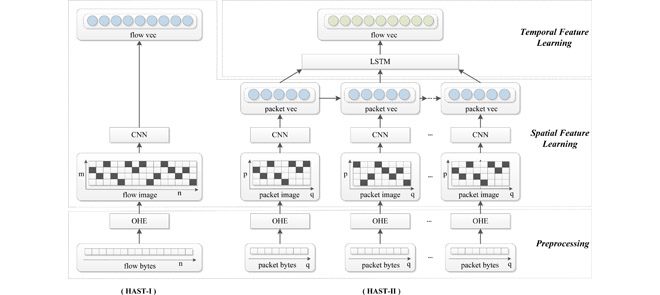
Deep Learning models for network traffic classification
The development of an anomaly-based intrusion detection system (IDS) is a primary research direction in the field of intrusion detection. An IDS learns normal and anomalous behavior by analyzing network traffic and can detect unknown and new attacks. However, the performance of an IDS is highly dependent on feature design, and designing a feature set that can accurately characterize network traffic is still an ongoing research issue. Anomaly-based IDSs also have the problem of a high false alarm rate (FAR), which seriously restricts their practical applications. In this paper, we propose a novel IDS called the hierarchical spatial-temporal features-based intrusion detection system (HAST-IDS), which first learns the low-level spatial features of network traffic using deep convolutional neural networks (CNNs) and then learns high-level temporal features using long short-term memory networks. The entire process of feature learning is completed by the deep neural networks automatically; no feature engineering techniques are required. The automatically learned traffic features effectively reduce the FAR. The standard DARPA1998 and ISCX2012 data sets are used to evaluate the performance of the proposed system. The experimental results show that the HAST-IDS outperforms other published approaches in terms of accuracy, detection rate, and FAR, which successfully demonstrates its effectiveness in both feature learning and FAR reduction.